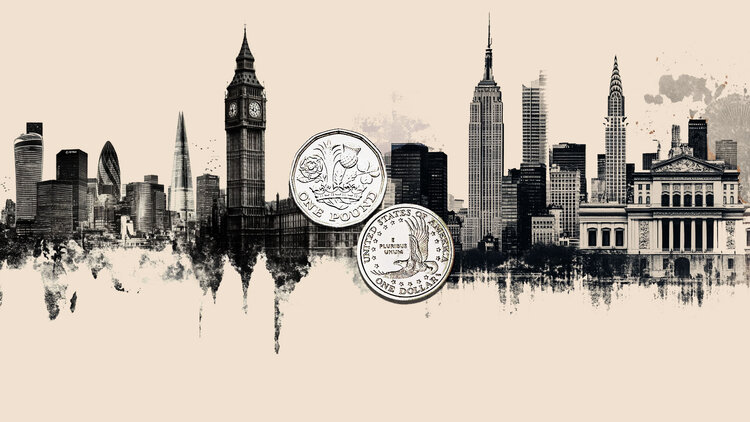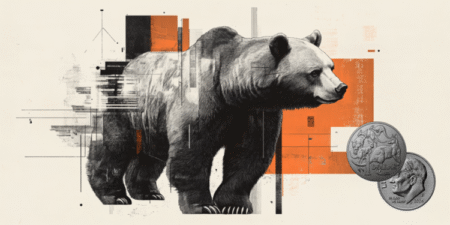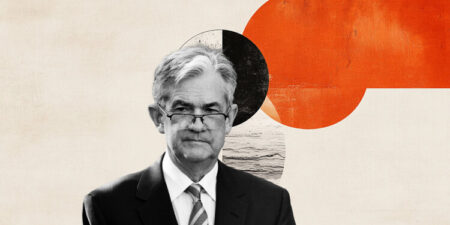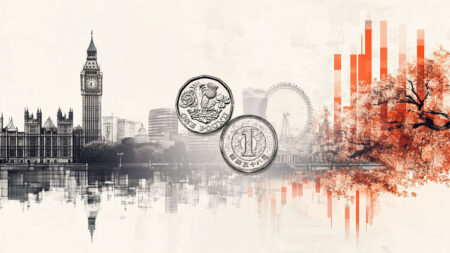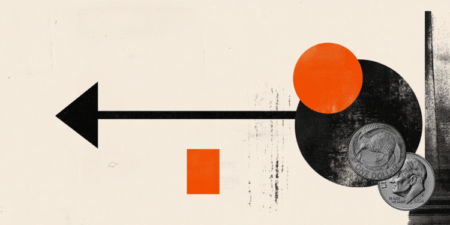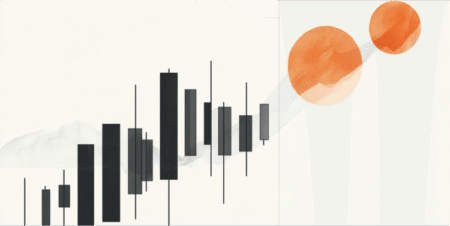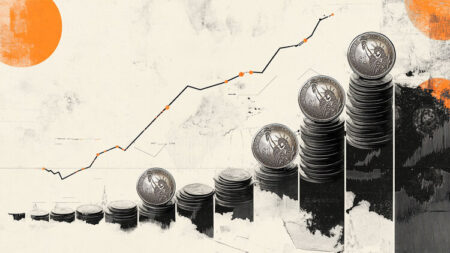- The United Kingdom’s annual CPI rose 3.6% in June vs. 3.4% forecast.
- British inflation advanced to 0.3% MoM in June vs. a 0.2% anticipated.
- GBP/USD keeps range near 1.3400 after UK CPI inflation data.
The United Kingdom (UK) headline Consumer Price Index (CPI) advanced by 3.6% on the year in June after reporting a 3.4% growth in May, the data released by the Office for National Statistics (ONS) showed on Wednesday.
The market forecast was for a 3.4% increase in the reported period. The reading moves away from the Bank of England’s (BoE) 2% target.
The core CPI (excluding volatile food and energy items) rose 3.7% year-over-year (YoY) in the same period, as against a 3.5% uptick in May while beating the estimated 3.5% print.
The ONS said that “transport, particularly motor fuels, made the biggest upward contribution to CPI annual rate in June.”
Services inflation steadied at 4.7% YoY in June.
Meanwhile, the monthly UK CPI inflation ticked up to 0.3% in June from 0.2% in May. The data beat expectations of 0.2%.
GBP/USD reaction to the UK CPI inflation data
The UK CPI data boost the Pound Sterling rebound, with GBP/USD up 0.19% higher on the day at 1.3408, as of writing.
British Pound PRICE Today
The table below shows the percentage change of British Pound (GBP) against listed major currencies today. British Pound was the strongest against the US Dollar.
| USD | EUR | GBP | JPY | CAD | AUD | NZD | CHF | |
|---|---|---|---|---|---|---|---|---|
| USD | -0.18% | -0.18% | -0.03% | -0.08% | -0.19% | -0.01% | -0.04% | |
| EUR | 0.18% | 0.00% | 0.14% | 0.09% | -0.06% | 0.11% | 0.15% | |
| GBP | 0.18% | -0.01% | 0.16% | 0.10% | -0.05% | 0.11% | 0.14% | |
| JPY | 0.03% | -0.14% | -0.16% | -0.06% | -0.11% | -0.00% | 0.04% | |
| CAD | 0.08% | -0.09% | -0.10% | 0.06% | -0.13% | -0.03% | 0.04% | |
| AUD | 0.19% | 0.06% | 0.05% | 0.11% | 0.13% | 0.15% | 0.19% | |
| NZD | 0.01% | -0.11% | -0.11% | 0.00% | 0.03% | -0.15% | 0.04% | |
| CHF | 0.04% | -0.15% | -0.14% | -0.04% | -0.04% | -0.19% | -0.04% |
The heat map shows percentage changes of major currencies against each other. The base currency is picked from the left column, while the quote currency is picked from the top row. For example, if you pick the British Pound from the left column and move along the horizontal line to the US Dollar, the percentage change displayed in the box will represent GBP (base)/USD (quote).
This section below was published at 02:15 GMT as a preview of the UK Consumer Price Index (CPI) inflation data.
- The United Kingdom’s Office for National Statistics will publish the June CPI data on Wednesday.
- Inflation, as measured by the CPI, is foreseen steady above the BoE’s goal in June.
- The GBP/USD pair heads into the release with a firmly bearish tone
The United Kingdom (UK) June Consumer Price Index (CPI) is scheduled for release on Wednesday at 06:00 GMT. The report, released by the Office for National Statistics (ONS), is closely watched amid the potential impact of inflation data on the Bank of England (BoE) monetary policy decisions.
Inflation in the UK, as measured by the CPI, is foreseen to have risen by 0.2% on a monthly basis, matching the May reading. The annual figure is expected to be 3.4%, also unchanged from its previous reading. Finally, the annual core CPI is forecast to post 3.5% following a similar reading in the previous month.
What to expect from the next UK inflation report?
After peaking at 11.1% by the end of 2022, UK annual inflation eased towards 1.7% in September 2024, below the BoE’s goal of 2%. Interest rate cuts began in August 2024, as policymakers were cautiously optimistic that things would slowly but steadily fall into place. Then, Donald Trump won the United States (US) elections and brought his protectionist policies and tariffs. The world believes his measures will likely revive inflationary pressures; hence, most major central banks decided to ease the loosening cycles, adopting a much more cautious approach.
The Bank of England cut interest rates to 4.25% on May 8, and decided to hold the benchmark rate steady when it met on June 19. Back then, six out of nine members of the BOE’s monetary policy committee opted to hold rates, with three opting for a 25-basis-point (bps) cut. “Global uncertainty remains elevated,” officials noted, adding that monetary policy is not on a preset path. The next meeting will take place on August 7.
Meanwhile, softer-than-anticipated figures weigh on the Sterling Pound. The unexpected monthly Gross Domestic Product (GDP) contraction announced earlier this month fueled concerns about the local economic health.
The central bank would be compelled to trim rates to help growth, but inflation-related fears will force officials to remain on hold.
According to Scotiabank, when analysing the GBP/USD pair, “There have been no major data releases and market participants are looking to Wednesday’s CPI release as the next major event risk. The release is unlikely to shift expectations for the BoE, where markets are pricing one 25 bps cut at the next meeting on August 7. Recent BoE communication has been dovish, with a specific focus on concerns related to the labor market.”
How will the UK Consumer Price Index report affect GBP/USD?
With all these in mind, softer-than-anticipated figures should boost the odds for an upcoming rate cut, while increased inflationary pressures will force the BoE’s hawkish stance.
Ahead of the announcement, the GBP/USD pair pressures the 1.3400 mark, with resurgent US Dollar (USD) demand coupling with GBP weakness.
Valeria Bednarik, Chief Analyst at FXStreet, notes: “The GBP/USD pair is oversold in the near term, yet there are no technical signs it would change course. The pair has immediate support in the 1.3370 area, where it bottomed in June, with a break below it opening the door for a steeper slump towards the 1.3300 mark. Additional declines are unlikely just because UK CPI figures, but possible on a risk-related catalyst.”
Bednarik adds: “The first line of sellers, in the case of a recovery, stands at 1.3475. An advance beyond the area exposes the 1.3520 region, with gains beyond the latter likely on renewed US Dollar’s weakness.”
Finally, Bednarik states: “A steady advance beyond the 1.3400 mark should favor a run past the year high and towards the 1.3500 area, while additional gains expose the 1.3560 price zone, where GBP/USD peaked in September 2022.”
Inflation FAQs
Inflation measures the rise in the price of a representative basket of goods and services. Headline inflation is usually expressed as a percentage change on a month-on-month (MoM) and year-on-year (YoY) basis. Core inflation excludes more volatile elements such as food and fuel which can fluctuate because of geopolitical and seasonal factors. Core inflation is the figure economists focus on and is the level targeted by central banks, which are mandated to keep inflation at a manageable level, usually around 2%.
The Consumer Price Index (CPI) measures the change in prices of a basket of goods and services over a period of time. It is usually expressed as a percentage change on a month-on-month (MoM) and year-on-year (YoY) basis. Core CPI is the figure targeted by central banks as it excludes volatile food and fuel inputs. When Core CPI rises above 2% it usually results in higher interest rates and vice versa when it falls below 2%. Since higher interest rates are positive for a currency, higher inflation usually results in a stronger currency. The opposite is true when inflation falls.
Although it may seem counter-intuitive, high inflation in a country pushes up the value of its currency and vice versa for lower inflation. This is because the central bank will normally raise interest rates to combat the higher inflation, which attract more global capital inflows from investors looking for a lucrative place to park their money.
Formerly, Gold was the asset investors turned to in times of high inflation because it preserved its value, and whilst investors will often still buy Gold for its safe-haven properties in times of extreme market turmoil, this is not the case most of the time. This is because when inflation is high, central banks will put up interest rates to combat it.
Higher interest rates are negative for Gold because they increase the opportunity-cost of holding Gold vis-a-vis an interest-bearing asset or placing the money in a cash deposit account. On the flipside, lower inflation tends to be positive for Gold as it brings interest rates down, making the bright metal a more viable investment alternative.
Read the full article here







